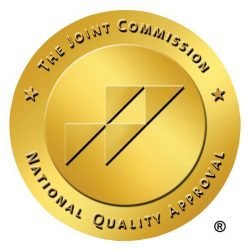Alsana Responds to AAP’s Clinical Practice Guideline “The Evaluation and Treatment of Children and Adolescents with Obesity.”
BACKGROUND
On January 9, 2023, the American Academy of Pediatrics (AAP) released “Clinical Practice Guideline for the Evaluation and Treatment of Children and Adolescents with Obesity.” It states:
Because obesity is a chronic disease with escalating effects over time, a life course approach to identification and treatment should begin as early as possible and continue longitudinally through childhood, adolescence, and young adulthood, with transition into adult care.
The goals of this, the AAP’s first clinical practice guideline (CPG) on the evaluation and treatment of pediatric obesity, are “ improved weight status and reduction or elimination of comorbidities.” The CPG acknowledges the structural, contextual, cultural, and socioeconomic factors that impede and influence health and treatment, including weight stigma and health inequities such as food insecurity. It goes on to outline weight-focused treatment approaches, including pharmacotherapy and metabolic and bariatric surgeries. (For younger children or children who are overweight and not ob*se, the recommendations are weight-focused but more conservative.)
While the guideline is intended to improve access to evidence-based care for the 14.4 million children and adolescents affected by ob*sity, many advocates have voiced their opposition to the guideline. Some believe the new recommendations to be too extreme and harmful, as they would perpetuate weight stigma and contribute to weight cycling and the development of eating disorders, disordered eating, and other mental health conditions.
OUR RESPONSE
At Alsana, we appreciate the importance of early intervention for children and adolescents struggling with chronic medical and mental health conditions; support holistic, family-centered, and non-stigmatizing approaches that acknowledge and address structural and contextual drivers of health and wellness; agree there is urgent work to be done to improve access to nutrition resources and other health interventions; embrace multidimensional (medical, nutritional, therapeutic, movement, relational), compassion-focused approaches to whole-client care, and believe healing happens in community.
OBJECTIONS
We have very real concerns about the new AAP guideline and the short- and long-term risks associated with the weight-focused approaches described therein. Specifically, we believe the prescription of restrictive meal plans, weight loss drugs, and bariatric surgery would put young people at risk for developing eating disorders, would promote unhealthy relationships with food, and serve to validate and perpetuate weight-related stigmas and myths.
We share the following concerns expressed by The Academy for Eating Disorders (AED).
- The AAP Guideline makes only minimal reference to eating disorder screening and treatment referral.
- Although pediatricians are advised to approach the topic of weight with sensitivity, we are concerned that traditional medical training minimally equips healthcare providers with these skills.
- We have concerns about the long-term efficacy and safety profile of medications being recommended for children as young as eight years old, and surgical interventions being recommended for adolescents as young as 13.
STIGMA
The fact that the AAP acknowledges the existence of weight bias and that medical professionals are frequently perpetrators of weight stigma and weight-based oppression is significant, but not sufficient to meet the practical needs of those the new guideline seeks to help. For example, while we agree that, “Pediatricians and other PHCPs have been—and remain—a source of weight bias. They first need to uncover and address their own attitudes regarding children with obesity,” suggesting self-reflection and the use of first-person language (ie, using the term “child with obesity, rather than “obese child”), etc. is not enough because how we talk about childrens’ weight is not at issue; how their weight is perceived is.
NUTRITION EXPERTISE
The guide states that intensive health behavior and lifestyle treatment (IHBLT) “is most often effective when it occurs face-to-face, engages the whole family, and delivers at least 26 hours of nutrition, physical activity, and behavior change lessons over 3 to 12 months.” While we support multidisciplinary health approaches that engage the entire household, we find it troubling that nutrition/nutrition counseling is scarcely mentioned in the guideline (outside its policy recommendations). We also wonder if pediatricians are qualified to provide this support as doctors receive very little if any, nutrition training.
As clinicians, closing the nutrition education gap for all medical professionals -particularly for those serving low-income communities should be an urgent priority. It is irresponsible to implement extreme weight loss practices that disproportionately impact vulnerable, low-income families and individuals when most have yet to benefit from substantive dietary expertise. It is wrong to ask people with larger bodies to commit to extreme weight loss methods simply because we’ve yet to figure out how to deliver proper preventative and holistic care.
COVID/TRAUMA
The AAP refers to ob*sity as a ‘disease’ associated with “significant medical and emotional health consequences and notes that the rate of BMI increase doubled during the COVID-19 pandemic.”
As eating disorder treatment experts, we know the pandemic highlighted and exacerbated health conditions for children, adolescents, and their families. We agree that multidisciplinary intervention teams must work together to support the most vulnerable in our communities.
That said, we fail to see how targeting weight loss in teens is a practical or worthwhile approach to improving their health and well-being. While weights may have fluctuated (amidst careless jokes warning against gaining the ‘COVID-15’), our kids were doing their best to survive while:
- rates of food insecurity increased (including lack of access to school-facilitated nutrition programs)
- Food insecurity is known to contribute to children’s psychological distress and is also associated with higher body weight in children and adults.
- rates of self-harming behavior, suicidality, anxiety, and depression increased (and had been increasing before the pandemic)
- the need for eating recovery services skyrocketed well beyond treatment capacity
- social isolation led to loneliness, boredom, and more time spent on social media
- Increased time on social media is known to be harmful to users’ body image; three out of four children as young as 12 (and eight in 10 young people aged 18 to 21) dislike their bodies and are embarrassed by the way they look.
- school shootings reached a record level, which added to the collective trauma of the pandemic.
- Research shows PTSD is associated with a higher risk of becoming ob*se.
- Shame can cause individuals to feel trapped in their trauma; compulsive binge eating is a common yet maladaptive coping and comfort mechanism for individuals who have experienced trauma.
The COVID-19 pandemic has been the most traumatic collective event in our lifetime, with The World Health Organization reporting the pandemic sparked a 25 percent increase in anxiety and depression worldwide. With weight gain being a known symptom of chronic stress, it would be more surprising if our kids’ weights hadn’t changed during the last two years.
Children and adolescents are experiencing a mental health crisis, and the last thing they need are more reasons to fixate on their weight or more authority figures pathologizing their developing bodies. Weight is not a reliable indicator of health. Self-compassion and shame resilience are needed to restore harmonious relationships with food and oneself. Alsana honors people of all body sizes and promotes evidenced-based health approaches that do not rely on weight change as a marker of health.
FINAL THOUGHTS
We at Alsana believe the practices outlined in the American Academy of Pediatrics Clinical Practice Guideline for “The Evaluation and Treatment of Children and Adolescents with Obesity” would promote weight stigma and shame, contribute significantly to the development of eating disorders, and therefore consider them harmful for children and adolescents. We support the Academy for Eating Disorders’ position on this issue and hope the AAP will partner with the eating disorder community to increase and improve access to holistic, equitable, and non-stigmatizing care.
Start the road to recovery with Alsana.





